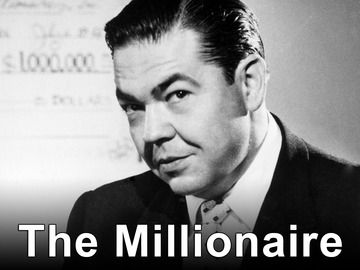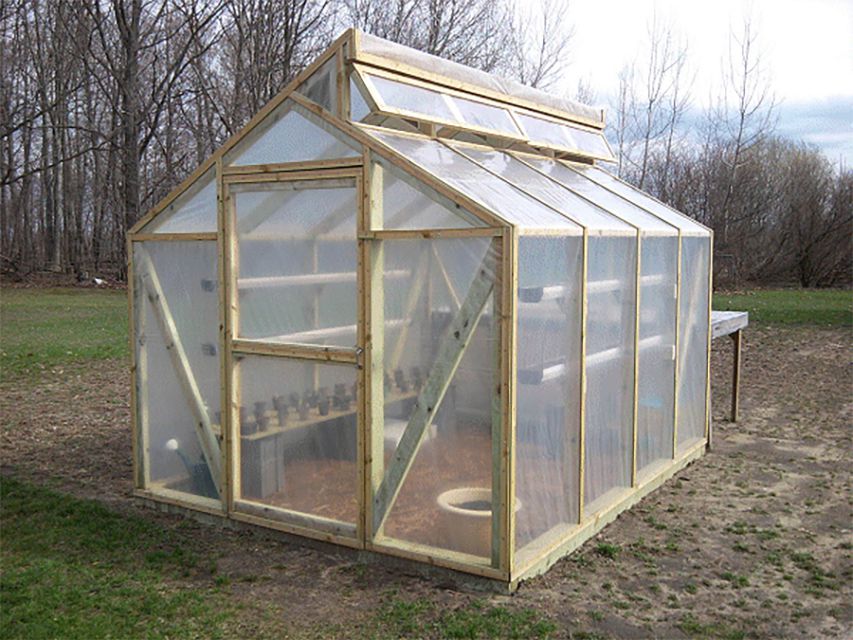Entertainment Venues of the 1990s: The Complete Guide to Where America Played
Entertainment venues that define the 1990s
The 1990s represent a golden era for entertainment venues across America. These spaces weren’t upright buildings — they were cultural landmarks where memories were make, trends were bear, and communities gather. From massive stadiums to intimate clubs, these venues shape how an entire generation experience music, sports, and social gatherings.
Concert venues: where music come alive
The concert scene explode during the 1990s, with venues of all sizes host performances that define the decade.
Arena rock and the mega venue experience
Madison Square garden in New York and the forum in Los Angeles remain premier destinations for major acts. These arenas host everything from guns n’ roses to Madonna, accommodate tens of thousands of fans per show. The scale of these venues match the larger than life personas of the performers who grace their stages.
Other notable arena venues include:
- The united center (cChicago)
- The spectrum (pPhiladelphia)
- The summit (hHouston)
- Boston garden (recent ffleet cente)
These venues typically seat 15,000 20,000 people and feature progressively sophisticated sound systems and light shows that transform concerts into multisensory experiences.
Amphitheaters: the summer concert experience
Outdoor amphitheaters become the quintessential summer concert experience. Venues like shoreline amphitheater in Mountain View, California, and alpine valley in Wisconsin host touring festivals that define the era.
Lollapalooza, create by Jane’s addiction frontman Perry Farrell in 1991, travel to amphitheaters countrywide, bring alternative rock, hip hop, and electronic music to suburban youth. Likewise, the h.o.r.d.e. festival and Lilith fair use these venues to showcase jam bands and female artists severally.
The appeal of amphitheaters was undeniable — open air seating, sprawl lawns where friends could gather on blankets, and a festival atmosphere that feel both massive and intimate simultaneously.
The club circuit: where alternative culture thrive
Smaller venues play an evenly important role in 90s entertainment. BGB in nNew York the wwhiskeya go in Los Angeles, and first avenue in Minneapolis serve as breeding grounds for emerge talent. These clubs typically hold between 200 1,000 people and create the perfect environment for the alternative and grunge movements to flourish.
Seattle’s music scene, which produce nirvana, pearl jam, and sound garden, center around venues like the crocodilecafée. Likewise, the electronic music revolution find its home in clubs like the limelight inNew Yorkk andAvalonn inBostonn.
These intimate spaces allow fans to experience music up close-fitting, oftentimes with minimal barriers between performers and audience. The sticky floors, dim lighting, and cramped quarters become part of the authentic experience that concertgoers crave.
Movie theaters: the evolution of cinematic spaces
The 1990s witness a dramatic transformation in how Americans experience films, with venue design play a crucial role.
The rise of the multiplex
Single screen theaters progressively give way to massive multiplexes with 16, 20, or fifty 30 screens under one roof. Amc anAMCegal lead this expansion, create entertainment complexes anchor in suburban malls or as standalone destinations.
These multiplexes feature:

Source: brilliantio.com
- Stadium seating (a revolutionary concept at the time )
- Digital sound systems (dDolby Digital dDTS and sadds)
- Larger screens and improved projection
- Expand concession options beyond traditional popcorn and candy
The opening of a new multiplex oftentimes become a community event, with grand opening celebrations and exclusive premieres. These venues transform movie watching from a simple activity into an immersive experience.
IMAX and specialty theaters
While nonetheless comparatively rare in the 1990s, IMAX theaters begin appear in select locations, oftentimes associate with museums or science centers. These massive screens offer documentaries and select Hollywood features reformatted for the oversized presentation.
Simultaneously, art house cinemas like landmark theaters provide venues for independent and foreign films that find grow audiences throughout the decade. These smaller, oftentimes urban theaters serve as cultural hubs for minefield seek alternatives to mainstream blockbusters.
Drive in theaters: the last hurrah
The 1990s represent the twilight years for many drive in theaters, with their numbers decline steady. Nevertheless, those that survive oftentimes become beloved community institutions, offer affordable family entertainment and a nostalgic connection to America’s past.
Some drive ins find new audiences by offer double or triple features at budget prices, make them popular with teenagers and families like. The communal aspect of drive ins — where people could socialize between cars or gather at the concession stand — offer a clearly different experience from indoor theaters.
Sports venues: cathedrals of athletics
Sports venues undergo significant changes during the 1990s, balance tradition with modern amenities.
The stadium building boom
The 1990s see an unprecedented wave of new stadium construction across all major sports. Facilities like Camden yards in Baltimore (1992 )revolutionize baseball stadium design, move outside from the cookie cutter multipurpose stadiums of previous decades toward retro inspire ballparks with modern amenities.
Other notable new venues include:
- Jacobs field in Cleveland (1994 )
- Coors field in Denver (1995 )
- Bank one ballpark in phoenix (1998 )
- The united center in Chicago (1994 )
- Cor estates center inPhiladelphiaa( 1996)
These new facilities feature luxury boxes, club seating, and expand concession options that eternally change the economics of sports attendance. The fan experience become progressively comfortable but too more expensive.
Iconic venues in their final years
The decade besides mark the final years for several legendary venues. Chicago stadium, Boston garden, and the original Yankee Stadium either closed or underwent major renovations during this period. These venues, with their cramped concourses, obstruct views, and uncomfortable seating, however hold a special place in fans’ hearts for their history and character.
The demolition of these facilities oftentimes become emotional community events, with fans purchase seats, pieces of the field, or other memorabilia as keepsakes.
Theme parks: immersive entertainment destinations
Theme parks evolve from simple collections of rides into full immersive entertainment destinations during the 1990s.
Disney’s expansion
Walt Disney World add numerous attractions and eventide entire parks during this decade. Disney’s animal kingdom open in 1998, while existing parks receive major additions like the Indiana Jones adventure at Disneyland (1995 )and the twilight zone tower of terror at diDisneygMGMtudios ( (94 ).)
These attractions represent a new philosophy in theme park design — create immersive environments that tell stories instead than but provide thrills. The attention to detail, from themed queues to atmospheric music, transform how guests experience these venues.
Universal Studios and the movie base experience
Universal Studios expand its presence with Universal Studios Florida (which open in 1990 )and islands of adventure ( (99 ).)hese parks specialize in attractions base on popular films and television shows, blur the line between movies and real life experiences.
Ride like backbone to the future: the ride, terminator 2: 3 d, and the amazing adventures of Spider-Man use cutting edge technology to place guests inside their favorite films. These attractions represent a significant advancement in themed entertainment, use motion simulators, 3d projection, and elaborate sets to create unprecedented immersion.
Gaming venues: from arcades to virtual worlds
Video game entertainment venues undergo perchance the virtually dramatic evolution of any entertainment space during the 1990s.
The last golden age of arcades
Traditional arcades experience their final boom period in the early 1990s, with fighting games like street fighter ii and Mortal Kombat draw crowds of players. Venues like Aladdin’s castle in malls across America become social hubs where gamers could compete and spectate.
As the decade progress, arcade games become progressively elaborate, with motion simulators, light gun games, and rhythm titles like dance revolution require specialized hardware that couldn’t be replicate on home consoles.
The rise of LAN gaming centers
As personal computers become more powerful, LAN (local area network )gaming centers emerge as new social venues. These facilities feature dozens of networked computers where players could compete in games like doom, quake, and ststar craftn the same physical space.
These centers offer access to high-end computers and fast internet connections that many homes lack, make them popular destinations for serious gamers. The social aspect remain crucial — players could communicate straightaway, form teams, and build communities around share gaming experiences.
Nightclubs and dance venues: the rave revolution
Nightlife venues experience a significant transformation during the 1990s as electronic dance music gain mainstream popularity.
Mega clubs and the superstar DJ
Venues like twill and the tunnel in New York, club quad in Miami, and the warehouse in Chicago become temples to electronic music. These massive spaces oftentimes accommodate thousands of dancers and feature elaborate lighting, sound systems, and decor.
The DJ booth, formerly tuck outside in a corner, become the focal point of these venues as superstar DJs like Paul oak enfold,Sashaa &dig weedd, anCarlrl cox achieve celebrity status. Their marathon sets could last 6 8 hours, transform nightclubs from simple dance venues into immersive, virtually religious experiences.
Warehouse raves and underground venues
Outside the legal club scene, the rave movement flourish in temporary or underground venues. Abandoned warehouses, open fields, and other non-traditional spaces were transformed into one night only dance venues through word of mouth and flyers.
These events emphasize the plus philosophy (peace, love, unity, respect )and create temporary autonomous zones where participants could escape mainstream culture. The ephemeral nature of these venues — here today, go tomorrow — was part of their appeal and mystique.
Shopping malls: entertainment destinations
Though mainly retail spaces, shopping malls evolve into significant entertainment venues during the 1990s.
The mall as social center
For American teenagers particularly, malls function as de facto community centers. Food courts, arcades, and movie theaters within malls create spaces where young people could socialize beyond the direct supervision of parents but in a comparatively safe environment.
Mall culture reach its zenith in the 1990s, with facilities like the mall of America in Minnesota (open 1992 )incorporate theme parks, aquariums, and other attractions alongside traditional retail. These destination malls become tourist attractions in their own right.
Entertainment retail
Specialty entertainment retailers expand dramatically during this period. Virgin megastores, tower records, and media play create immersive shopping experiences for music and movie enthusiasts. These stores oftentimes feature listening stations, in store performances, and midnight release parties that transform shopping into entertainment.
Likewise, bookstore chains like borders and Barnes & Noble reimagine their spaces as cultural destinations with cafés, read areas, and author events. These venues encourage customers to linger, blur the line between retail and entertainment.
The legacy of 90s entertainment venues
The venues that dominate the 1990s entertainment landscape leave a lasting impact that continue to influence how we experience leisure activities. Many physical spaces have disappeared or transform, but their influencremainsin evident in modern entertainment design.

Source: passport2dreams.blogspot.com
The emphasis on create immersive, multisensory experiences — whether in concert venues, theme parks, or movie theaters — has solitary intensify. Likewise, the trend toward luxury amenities and premium experiences that begin with 1990s sports venues has become standard across the entertainment industry.
Perchance virtually significantly, these venues foster communities and subcultures that transcend their physical spaces. From the grunge clubs of Seattle to the raves of Chicago, these gathering places create share experiences that define a generation’s cultural identity.
As entertainment progressively move online, the memory of these physical spaces serve as a reminder of the irreplaceable value of gathering unitedly to share experiences in real time and real space — a legacy of the 1990s that remain powerful eventide as technology continue to transform how we play, watch, and connect.
MORE FROM hotondeals.com













